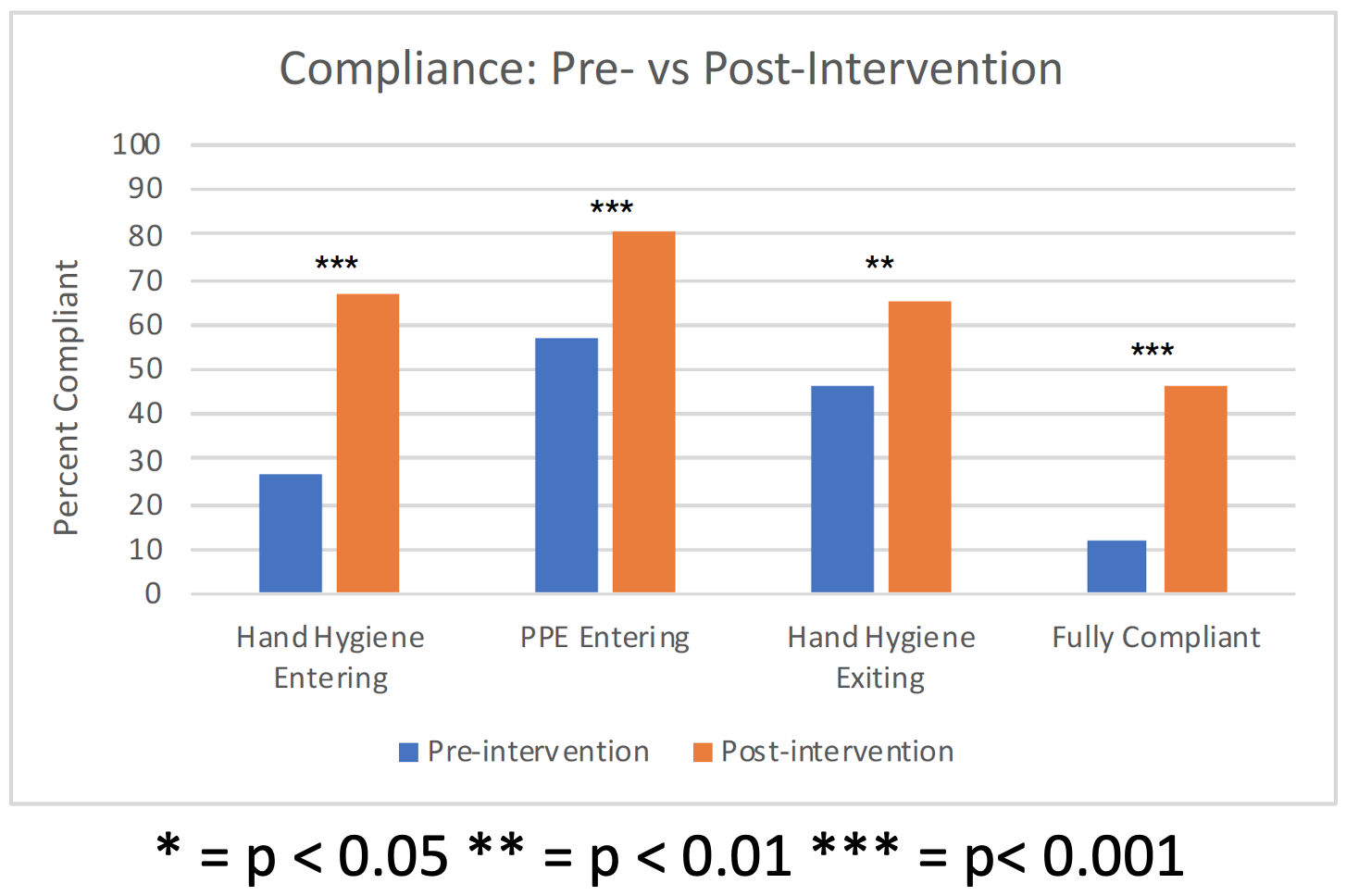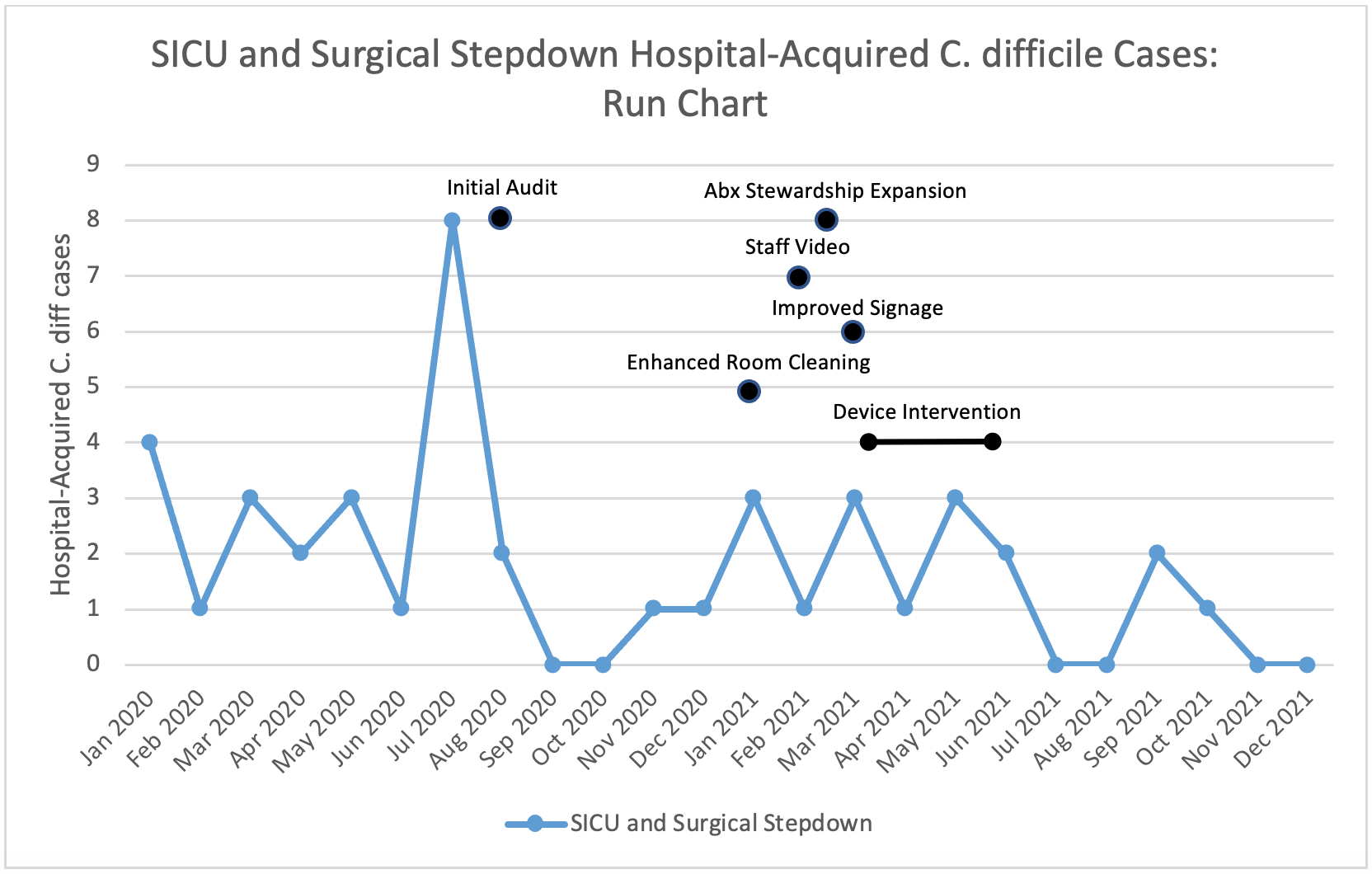Automated Audio Reminder Devices Improve Staff Compliance with Hand Hygiene and Personal Protective Equipment Use in the Care of C. difficile-Positive Patients
Spencer Wilson, Jacob Bodde, Pamela Rosenkranz, David McAneny
Surgery, Boston Medical Center, Boston, Massachusetts, United States
Objective(s): In this study, we evaluate the impact of automated audio reminder devices upon hand hygiene and compliance with proper personal protective equipment (PPE) during the care of C. diff-positive patients who were located in the Surgical intensive care and stepdown units.
Design: Pre- and post-intervention quality improvement study.
Setting: The Surgical ICU (SICU) and Surgical Stepdown units of an urban, academic medical center. In July 2020, our hospital's SICU and Surgical Stepdown units experienced a cluster of hospital-acquired C.difficile infections. This cluster coincided with audits showing below-expected hand hygiene and PPE usage.
Patients: C. difficile positive patients in the SICU and Surgical Stepdown Units.
Interventions: The intervention in this study involved an automated, motion-activated device positioned at the doorway of rooms containing C. diff-positive patients. This device delivered a reminder to "Pump in [use hand sanitizer on entry], wear PPE, and wash out [wash hands with soap and water on exiting]"? upon personnel entry or exit. The device was piloted in one room for 24 hours to troubleshoot its function and to receive feedback from nurses and the patient prior to the intervention period. During April and May 2021, the devices were installed in "contact plus"? rooms of patients with C. difficile.
Main Outcome Measure(s): Pre-intervention "silent"? (surreptitious) audits were performed during the month of January 2021 to assess baseline levels of hand hygiene and PPE compliance among staff caring for patients with C. diff. During the intervention, repeat audits were performed to measure hand hygiene and PPE compliance, and pre- and post-intervention compliance rates were compared using chi-squared statistics.
Results: The investigators performed 100 silent audits during both the pre- and post-intervention periods. Pre-intervention, personnel used correct hand hygiene upon room entry in 27% of observations, wore correct PPE in 57%, and performed correct hand hygiene upon exiting in 46% of audits. Full compliance with all three measures was present in just 12% of observations. Following the intervention, personnel used correct hand hygiene upon room entry in 67% of observations (P< 0.001), wore appropriate PPE in 81% (P< 0.001), and performed correct hand hygiene when exiting in 65% of audits (P= 0.007). Full compliance with all three measures rose to 46% of observations (P< 0.001).
Conclusions: Implementation of an automated audio reminder was associated with significant increases in appropriate hand hygiene and PPE usage compliance by personnel entering rooms of C. diff-positive patients. Admittedly, this initiative coincided with other staff awareness and C. difficile prevention initiatives, so it is difficult to determine the true magnitude of impact. Nevertheless, audio reminders may provide a low-cost method of improving staff compliance with proper hand hygiene and PPE usage.

Back to 2022 Abstracts
